Premium Only Content

Episode 2568: Modernist Cardinals and the Crisis in the Catholic Church
Modernist Cardinals and the Crisis in the Catholic Church: Staying Faithful Amidst Doctrinal Confusion
On the great feast day of the Holy Rosary never more in our Church history have we had the greatest need of intercession of the Blessed Mother. Our Lady of Remedy is much needed on this feast day as well.
In this episode, we explore a series of significant theological and doctrinal developments within the Catholic Church, framed against Pope Francis's recent appointments and the ongoing Synod on Synodality. We will also examine the broader cultural and ecclesial implications, especially for Catholics rooted in traditional beliefs and practices.
The Context of the Synod
We begin by revisiting the context of the German Synodal Way, a fast-paced version of what is now unfolding more slowly within the global Synod on Synodality. As part of this larger narrative, Pope Francis has announced a slate of new Cardinals key among them is soon-to-be Cardinal Bishop Pablo Virgilio David of Caloocan in the Philippines. While the Philippines is a majority Catholic nation, David represents a more modernist, progressive interpretation of Catholic teaching, deeply influenced by his studies at the Catholic University of Louvain in Belgium and his experiences during the rule of Ferdinand Marcos. His academic credentials, combined with his positions as a Bible expert and critic of the Philippine government, have made him a controversial figure in both the ecclesial and political spheres.
David, who was appointed to his current position by Pope Francis in 2015, has emerged as the head of the Philippine bishops' conference, carrying significant influence. However, despite these accolades, many traditional Catholics view his elevation to Cardinal as a worrying sign of further doctrinal shifts. A Catholic from the Philippines summed up this concern by stating, "Anyone expecting him to teach the Catechism of the Council of Trent or Pope Pius IX's Syllabus of Errors will be disappointed. For him, it’s all about the creative interpretation of Scripture, tradition, and the Magisterium through the lens of Vatican II."
Radical Reinterpretation of the Priesthood
One of the most troubling aspects of David’s theological outlook is his rejection of the traditional understanding of the priesthood. He argues, "A church that practically reduces the priesthood to the ordained minister will never grow into a missionary church." He further suggests that Vatican II calls for a "common priesthood of the faithful," which he interprets as a mandate for the laity to assume roles once reserved for clergy. His statements undermine the age-old notion that only priests, as alter Christus (another Christ), stand in the place of Christ in the sacred liturgy. This shift represents a clericalization of the laity and a simultaneous devaluation of the ordained priesthood a hallmark of the modernist theological outlook that permeates much of the Vatican II-inspired reforms.
For many traditionalists, this interpretation rings alarm bells, especially in light of Pope Francis’s broader agenda to redefine ecclesial roles. Some have compared David’s views to a form of McCarthyism in the Church, where a hyper-politicized reading of the Gospel has taken precedence over clear and consistent doctrine. Critics argue that his brand of synodality has allowed for a breakdown in the traditional hierarchy, fostering confusion among the faithful.
Deacon Nick Donnelly’s Analysis: A Disturbing Trend
Deacon Nick Donnelly, a sharp observer of the Church’s modernist trends, has expressed concern over David’s rise, pointing out a disturbing pattern in Pope Francis’s appointments. Donnelly notes that figures like Cardinal Timothy Radcliffe, who was selected by Francis, are proponents of ideologies that have little to do with authentic Catholicism. Radcliffe, for instance, has controversially recommended that the faithful engage with secular and morally questionable media to “stretch their imaginations,” using language that some find concerning. These appointments, Donnelly argues, are part of a larger liberal program intent on dismantling the pillars of Catholic tradition.
Donnelly’s analysis doesn’t stop with Radcliffe or David. He also points out that for the first time in history, England now has four Cardinals Nichols, Roach, Radcliffe, and Fitzgerald none of whom are known for their defense of traditional Catholic teaching. Instead, they have been recognized for their alignment with the Church’s modernist turn, a fact that Donnelly laments as a “cause of great shame.” He compares them to Cardinal Wolsey, the infamous enabler of King Henry VIII, arguing that these men represent a capitulation to secularism rather than a prophetic witness to the faith.
The Broader Implications of Liberation Theology
Another troubling aspect of this trend is the elevation of bishops and cardinals from regions where liberation theology is deeply embedded. Liberation theology, which blends Marxist analysis with Christian doctrine, has long been viewed with suspicion by traditional Catholics for its tendency to emphasize social and political liberation over spiritual salvation. The fact that many of the new cardinals come from regions where liberation theology thrives is no accident, Donnelly suggests. Rather, it points to a deliberate attempt by Pope Francis to reshape the Church in a way that aligns with progressive, secular ideologies.
Closing Thoughts
In conclusion, the elevation of figures like David and Radcliffe to positions of power within the Church represents a clear continuation of Pope Francis’s vision for a more “open” and “inclusive” Church one that departs from the traditional teachings that have been upheld for centuries. While many Catholics may welcome these changes as signs of progress, those who hold fast to the teachings of the Council of Trent and Pope Pius IX’s Syllabus of Errors are increasingly feeling alienated. As one Catholic from the Philippines poignantly remarked, these developments are pushing some toward sedevacantism, as they struggle to reconcile these new teachings with the timeless truths of the faith.
The question we must ask ourselves is whether this shift represents a genuine evolution of the Church’s mission or a dangerous departure from the very foundations of Catholicism. Only time will tell. But for now, it is clear that the battle for the soul of the Church is far from over.
Conclusion: Closing Prayer
As we conclude this episode, let us turn once again to prayer, asking for the grace to remain faithful to the truth in these trying times.
In the Name of the Father, and of the Son, and of the Holy Spirit. Amen.
Heavenly Father, we thank You for the wisdom and courage of the saints, popes, and theologians who have gone before us. Help us to follow their example and remain steadfast in our faith, even when the world and even parts of the Church seem to abandon Your truth. Strengthen us to resist the errors of modernism, relativism, and false ideologies, and to always cling to the teachings handed down to us through the ages.
We entrust ourselves to Your care, O Lord, and ask for the intercession of the Blessed Virgin Mary, St. Joseph, St. Michael the Archangel, and all the saints, that we may persevere in the faith until the end.
We ask this through Christ, our Lord.
Amen.
In the Name of the Father, and of the Son, and of the Holy Spirit. Amen.
-
 LIVE
LIVE
Vigilant News Network
11 hours agoUK Government BUSTED in Secret Plot to Extract Your Data | Media Blackout
1,509 watching -
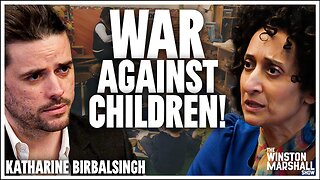 1:03:32
1:03:32
Winston Marshall
3 days ago"War On Children!" The DEMISE Of The West Starts With Schools - Katharine Birbalsingh
107K65 -
 48:02
48:02
Survive History
14 hours ago $5.71 earnedCould You Survive as a Sharpshooter in the Napoleonic Wars?
56.2K3 -
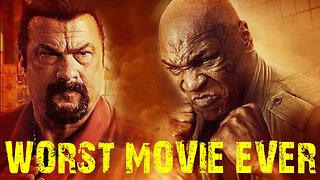 12:03
12:03
Space Ice
15 hours agoSteven Seagal's China Salesman - Mike Tyson Knocks Him Out - Worst Movie Ever
41K16 -
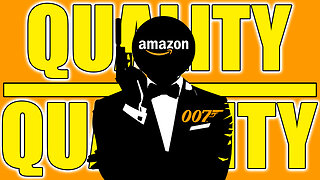 11:37
11:37
Degenerate Jay
14 hours ago $12.01 earnedJames Bond Needs Quality Over Quantity From Amazon
80.8K8 -
 15:23
15:23
Misha Petrov
14 hours agoTrad Wives & Girl Bosses Go to WAR!
63.7K44 -
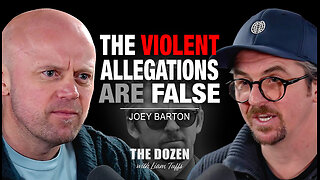 2:03:11
2:03:11
TheDozenPodcast
13 hours agoFootball villain fighting the state: Joey Barton
50.7K1 -
 13:18:50
13:18:50
Scottish Viking Gaming
15 hours ago💚Rumble :|: Sunday Funday :|: Smash the Blerps and Vape the Terpes
90.2K8 -
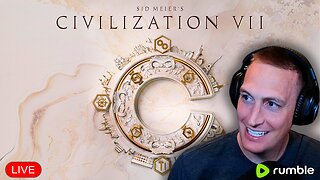 1:45:00
1:45:00
RG_GerkClan
17 hours ago🔴LIVE Sunday Special - It's Time for World Domination - Civilization VII - Gerk Clan
84.8K28 -
 LIVE
LIVE
Major League Fishing
4 days agoLIVE Tackle Warehouse Invitationals, Stop 1, Day 3
106 watching